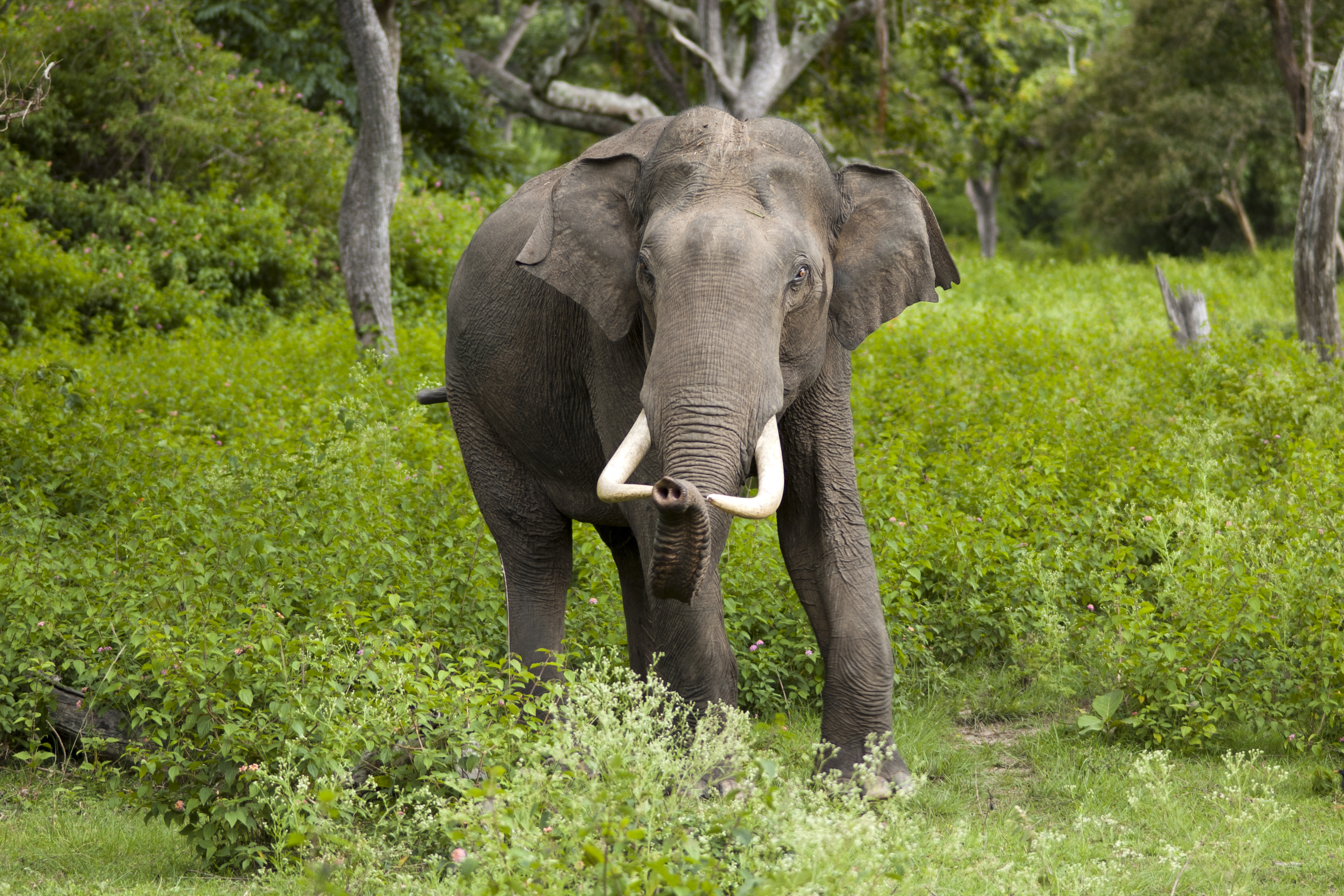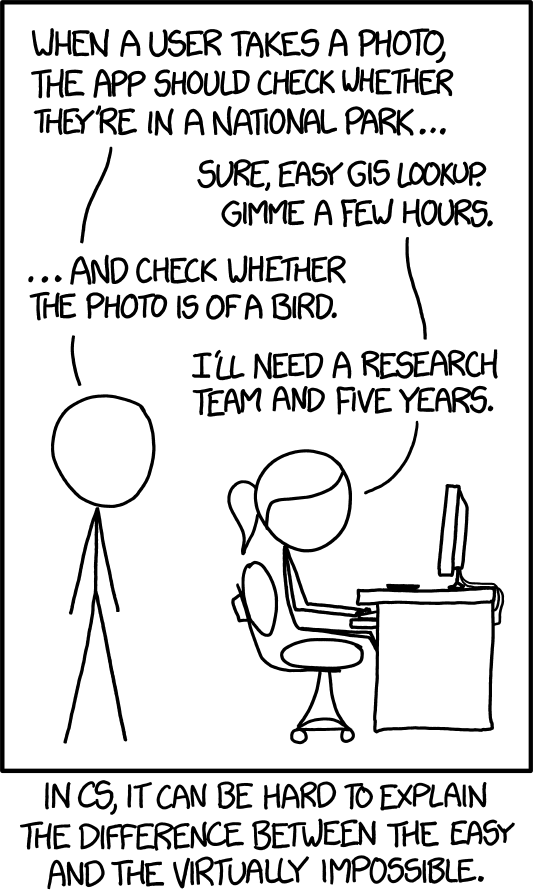How Do You Define a Circle?
Perception and Computer Vision Diagnostics
2023-12-06
Problem Overview
Footwear Forensics

Collect images of shoe soles from the population using the scanner
Identify features in the tread patterns w/ computer vision
Generate a local database of common pattern features
Characterize frequency of a new shoe w/ random match probability computed from database
Quantifying the frequency of shoes in a local population is an unsolveable problem - Leslie Hammer, Hammer Forensics, March 2018
Footwear Forensics
Other researchers use the output from the CNN
(without a trained model head)hard to explain to practitioners
hard to understand meaning
for models to be accepted in forensics, they need to be explainable!

Our Assumption in 2018
If models can differentiate between types of elephants, they can identify shapes… right?



:::
XKCD: Tasks
Complication: Different CV Models
We can reasonably pose this problem in 3 different ways:



Each method requires a different labeling schema, annotation method, and data format
In Search of Human-Friendly Model Output
(What we’ve tried so far)
Initial Approach (~2019)
Use VGG16 to classify 256x256 px chunks of images
Goal is to label the entire chunk with one or more classes

VGG16 Shoe Example approach
- Hard to integrate predictions into the main image
Initial Approach (~2019)

Not terrible but a lot of class confusion between e.g. Circles & Text, Quad & Polygon, Quad & Triangle
Synthetic Data Test (2020)
- If we create different shapes, can a neural network differentiate them?

Class Examples
Synthetic Data Test (2020)

Synthetic Data Test (2020)
| Image | Circle | 3 | 4 | 5 | 6 | 7 | 8 | 9 | Star |
|---|---|---|---|---|---|---|---|---|---|
 |
.9999 | 0 | 0 | 0 | 0 | 0 | 0 | 0 | 0 |
 |
.9999 | 0 | 0 | 0 | 0 | 0 | 0 | 0 | 0 |
Shoe data is complicated to label
Predictions made on ambiguous data don’t work as well as we’d like
Object Detection (2021-2023)

Object Detection: Propose a bounding box and label for each object in an image
re-encode labels using a different data format
Toolkit:
- Started with FastAI, but had terrible support/documentation
- Eventually rewrote everything in PyTorch
Fundamental Problem

What shape is in the box? Text? Circle? Triangle? Star?
Neural networks are trained on millions of human-annotated photos
Even shoe soles are artificial relative to a natural scene
Networks weren’t trained on the artificial patterns or layouts in shoe soles
Labeling is fraught with errors and incomplete information
Labeling schema are very complex & must account for human perception
Approaching the Problem Backwards

Approaching the Problem Backwards
Generate a large library of synthetic data
pre-labeled
complex characteristics
Train preliminary model
Run 2D patterns through an existing network to generate more realistic 3D images
- Train 2nd-gen model
Approaching the Problem Backwards
Run 2D patterns through an existing network to generate more realistic 3D images
- Train 2nd-gen model
Train on marketing-quality pictures labeled by humans
- Update 2nd gen model (transfer learning)
Approaching the Problem Backwards
Train on marketing-quality pictures labeled by humans
- Update 2nd gen model (transfer learning)
Train on Scanner Photos
- Update 3rd gen model weights
(account for lower-quality photos)
- Update 3rd gen model weights
Measure performance/accuracy changes over time on a consistent set of stimuli created from real shoes
Synthetic Pattern Generation
- Use SoleMate style labeling for examiner familiarity
(Much more complex coding scheme)




Synthetic Pattern Generation
Regions of distinct patterns
Synthetic Data Generation
Different Patterns
Synthetic Data Generation
Shoe Outlines
Synthetic Data Generation
Synthetic Data Generation
Advantages
SVGs can include metadata
Easy scaling
SVG intersection operations will automatically mark partial objects
Flexible data format:
- Region segmentation
- Object Detection
- Object Classification
all generated from same source data
Disadvantages
Manual SVG creation
(52 images \(\approx\) 8h )Creating a library to generate data
3D rendering after 2D stage:
- digital via OpenSCAD + SVG?
- Can apply different surface colors
Lots of work required before we start in on photos
End Goal
Human Friendly Model Outputs
Familiar features for database search
Data quality flexibility:
- Messy photos for database creationi
- Neat images for search
Goal: reliable estimates of random match probability RMP: the probability that someone in the area has a shoe with similar characteristics.
Questions?
Acknowledgements
This work was funded (or partially funded) by the Center for Statistics and Applications in Forensic Evidence (CSAFE) through Cooperative Agreements 70NANB15H176 and 70NANB20H019 between NIST and Iowa State University, which includes activities carried out at Carnegie Mellon University, Duke University, University of California Irvine, University of Virginia, West Virginia University, University of Pennsylvania, Swarthmore College and University of Nebraska, Lincoln.
Students who have worked on this project:
- Muxin Hua (2022-)
- Jayden Stack (2021-2022)
- Miranda Tilton (2018-2019)


